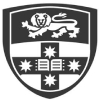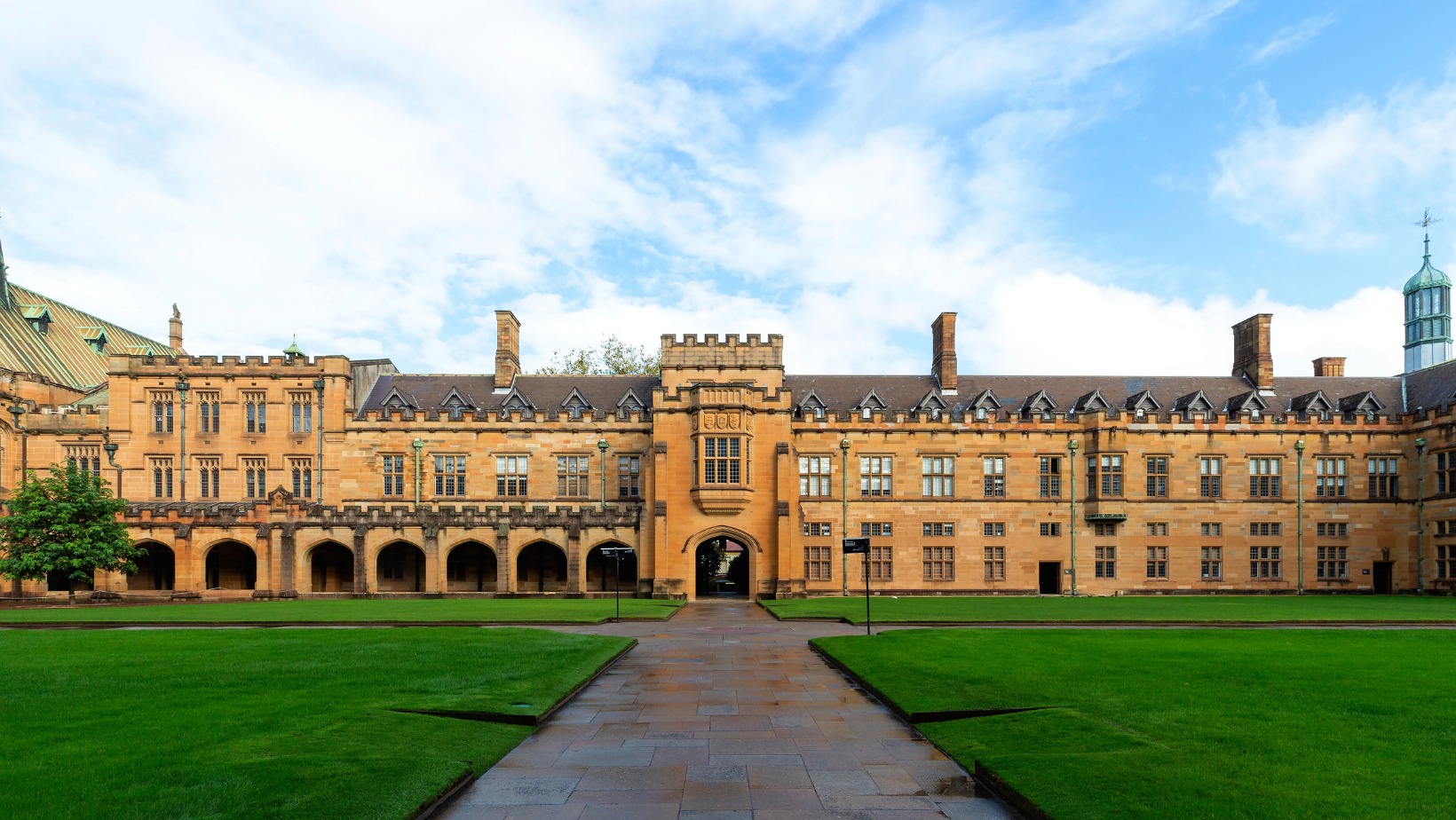NSW 2006, Australia
Career Counselling

The University of Sydney is Australia’s oldest university. Founded in 1850, it is now home to almost 75,000 total students (approximately 41,000 undergraduates and 34,000 postgraduates). 44% of the student population is from outside Australia. It is ranked first in Australia and in the Southern Hemisphere for graduate employability in the QS Rankings 2022.
The University of Sydney has ten teaching and research campuses across Australia, with the largest, the Camperdown / Darlington campus, occupying 178 acres in Sydne...
| Establishment year | 1850 |
| Total Students | 74,862 (2021) |
| International Students | 32,937 (2021) |
| QS World University Rankings 2024 | =19 |
| Campus Size | N/A |
| Total Number of Campuses | 10 + one Centre in China |
| University Website | https://www.sydney.edu.au/ |
| No. of Schools and Divisions | 8 Faculties (Arts and Social Sciences, Engineering, Medicine and Health, Science, Architecture, Design and Planning, Business School, Conservatorium of Music, Law School) |
| Nobel Prize Winner Alumni | 2 alumni + 3 staff members |
| No. of Education Programs | 130 (undergraduate), 450+ (postgraduate) |
| Student to Faculty ratio | 21:1 |
The University of Sydney offers undergraduate and postgraduate courses through 8 Faculties, which are further subdivided into schools, colleges, research centres, and institutes.
Domestic applicants to undergraduate courses at the University of Sydney should check whether their school marks match the minimum requirements for their chosen courses. Each student is given an Australian Tertiary Admission Rank (ATAR), and the University maintains a list of the minimum ATAR for each UG course that guarantees admission to an undergraduate domestic applicant.
International applicants to UG courses should check if their school qualifications are recognised by the University. A full list of accepted academic school boards is on the relevant University web page. In a similar manner to the domestic admission guide, international candidates can check the minimum academic requirements for their courses of interest at this link. It also contains details of the English proficiency test scores required, e.g. in the TOEFL or IELTS. All applicants should also check individual course pages for specific entry criteria over and above the minimum requirements listed above.
All postgraduate applicants need to fulfil the following criteria:
Domestic (citizens of Australia or New Zealand) applicants to undergraduate courses at the University of Sydney should first use the course finder tool to check entry requirements, deadlines, and course details. Once all documents and supporting materials are ready, the application can be submitted through the Universities Admissions Centre (UAC) portal.
Domestic postgraduate applicants start in a similar manner, by choosing their course and making sure that they are eligible and that all documentation is ready. However, the applications are submitted through the University of Sydney website in most cases, with course pages having an "Apply" button to make the process simple. The JD degree application alone has to be filled out through the UAC site. The deadlines are in January and July, respectively, for the two semester intakes, though candidates can apply throughout the year.
International applicants to UG and PG courses follow a process similar to that followed by domestic PG applicants; most course pages have a direct application button for overseas candidates. There is an additional application fee of $150. Once the application has been submitted, the University sends an unconditional offer, a conditional offer, or a rejection over email. A conditional offer can be converted into a concrete Offer of Place by completing any pending academic or English proficiency requirements that were left undone.
Undergraduate domestic students at the University of Sydney typically pay the lowest fees; their tuition costs are subsidised, in most cases, by the Australian Government (through the Commonwealth Supported Places scheme). In such cases, they pay only the student contribution amount for their course, which depends on the fee band but is usually around $10,000 per year for most courses: For example, the Bachelor of Science contribution amount is $9,100 per year, and the Bachelor of Arts amount is $15,100.
Most postgraduate domestic students are not eligible for the CSP scheme, and pay full tuition fees. For example, the tuition fee for the Master of Management course is $36,000 per year, and that for the Master of Commerce course is $38,000 per year.
International tuition fees vary from course to course. The University of Sydney maintains a web page with indicative ranges of fees sorted by Faculty. For example, for Arts and Social Sciences courses, UG course fees range from $42,000 to $48,000 per year, while PG tuition fees are on average $45,000 per year. Most Faculties have tuition fees within 10% of these numbers, except the Faculty of Medicine and Health, where the Doctor of Dental Medicine annual fees are $84,000.
The University maintains a living cost calculator to help estimate additional spending, and the Department of Home Affairs of Australia mandates that every student demonstrate the financial ability to bear living costs of up to $21,000 per year. The calculator tool estimates an average of $1,754 per month spent at the University; this amount goes towards accommodation, food, utilities, and personal costs.

The University maintains ten campuses in Australia: Camperdown / Darlington, Camden, Mallett Street, the Sydney College of the Arts Campus, the Medical School and Teaching Hospitals, Surry Hills, 133 Castlereagh Street, the CBD, the Sydney Conservatorium of Music, Westmead, and One Tree Island Research Station. The main Camperdown / Darlington campus is particularly notable for its size, historic sandstone buildings, modern architectural marvels, and academic facilities. The Sydney Medical School has a presence at ten clinical schools and rural health centres across New South Wales. The One Tree Island Research Station carries out ecological work on the Great Barrier Reef. The University of Sydney Centre in China identifies emerging opportunities in collaborative innovation and research.
Sydney Uni Sport & Fitness coordinates all health and sporting activities on campus. The University has a long record of excellence in sport: 205 alumni have competed at the Olympic and Paralympic Games, and more than 120 graduates have competed in Rugby Union leagues or for the national team. There are over 40 sports clubs at the University to train the next generation of sports stars, and students can sign up for just $10 per month.
Sporting competitions are held at every level: intramural, where members of different Halls of Residence compete, inter-faculty, where academic divisions collide, and inter-varsity, where the best sportspeople represent the University of Sydney.

The University operates two world class Health & Fitness Centres. Every week, more than 65 group fitness classes take place. There is also an 8 lane swimming pool, a gym with over 200 cardio machines and a functional training area, basketball and squash courts, and even a Martial Arts dojo.
The University of Sydney Careers Centre helps students with job and internship services from their first year until after they graduate. There are two main aspects to the facilities provided: online and offline resources to enhance employability, and placement and career events held throughout the year. The Sydney CareerHub provides online tools and resources and allows students to sign up for workshops, seminars, and other networking events. To enhance the resumes and interview readiness of students, the University organises one one one mentoring sessions and a series of webinars on career skills. The CareerHub also hosts the Jobs Database, where students and recent graduates can find and apply to virtual internships, summer and winter part time work options, and full time jobs.
Undergraduate domestic students at the university have access to 14 Scholarships that are independent of Faculty. For example, the MySydney scholarship awards $8,500 per year to academically excellent students who reside in areas of socio-economic disadvantage; awardees of this Scholarship are also eligible for the Adam Scott Foundation Scholarship, where the amount can go up to $20,000.
Domestic postgraduate students can find details of both general and faculty-specific scholarships on the University website. For example, the David Clarke Memorial Scholarship provides an award of $15,000 toward postgraduate tuition fees for any member of the Sydney Rugby Club.
International students at the University should start their scholarship search by browsing the scholarship database of general and faculty-specific awards. UG general scholarships include the Sydney Scholars India Scholarship Program, which awards up to $40,000 to Indian citizens; up to 28 students can achieve this scholarship. The corresponding Sydney Scholars India Equity Scholarship is for postgraduate students from India at the University of Sydney and involves an award of up to $60,000, that covers both tuition fees and living costs.
